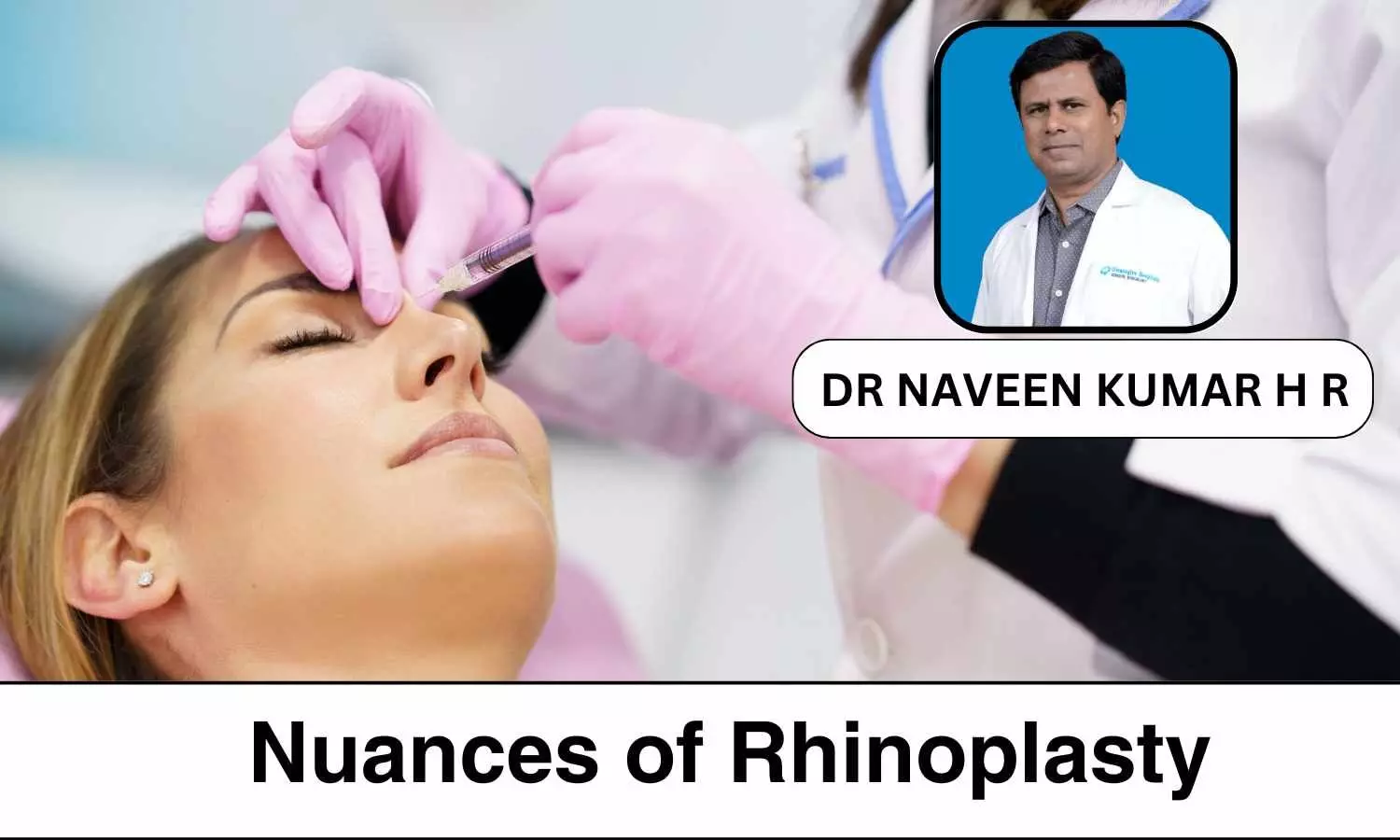Understanding Rhinoplasty: A Comprehensive Guide to the Nuances of Rhinoplasty - Dr Naveen Kumar H R

Rhinoplasty, commonly known as a nose job, is a surgical procedure that aims to enhance the appearance and function of the nose. It is a highly individualized procedure that can address various concerns, from cosmetic issues to breathing difficulties.
The nose is a vital facial feature that plays a significant role in defining one's identity, and a well-proportioned nose can enhance facial harmony. However, a nose with aesthetic or functional issues can affect self-confidence, and rhinoplasty offers a solution for individuals seeking to improve their nasal appearance or alleviate breathing difficulties.
Cosmetic Concerns
Cosmetic concerns are the most common reason for undergoing rhinoplasty. Many individuals seek to refine their nose's shape, size, or symmetry. A bulbous or droopy tip, nasal asymmetry, or nostril size and shape can be addressed through rhinoplasty.
Some individuals may have a nose that is too large or too small for their face, and rhinoplasty can help achieve a more proportionate appearance. The procedure can also correct birth defects, such as a cleft lip and palate.
Breathing Difficulties
Breathing difficulties, such as a deviated septum or nasal congestion, can also be addressed through rhinoplasty. A deviated septum can cause nasal congestion, leading to breathing difficulties and sinus issues. Rhinoplasty can correct this issue, improving nasal function and overall health. Additionally, the procedure can help alleviate snoring and sleep apnea.
Surgical Techniques
The surgical techniques used in rhinoplasty vary depending on the individual's needs. Open rhinoplasty involves an external incision, while closed rhinoplasty involves an internal incision. Tip rhinoplasty focuses on the nasal tip, while septo-rhinoplasty addresses septal issues.
Non-surgical rhinoplasty uses injectables and fillers for temporary results. The choice of technique depends on the complexity of the procedure and the individual's desired outcome.
Facial Harmony
Facial harmony is a crucial aspect of rhinoplasty. The goal is to achieve balance and proportion between the nose and other facial features. Nasofacial harmony (nose-to-face balance) and nasolabial harmony (nose-to-lip balance) are essential considerations. A skilled surgeon will assess the individual's facial structure and nasal anatomy to create a personalized plan that achieves facial harmony.
Risks and Complications
As with any surgical procedure, rhinoplasty carries risks and complications. These may include bleeding, infection, scarring, and nasal asymmetry. However, these risks can be minimized by choosing a skilled and experienced surgeon. It is essential for individuals to have realistic expectations and understand the potential risks and complications before undergoing the procedure.
Recovery Process
The recovery process for rhinoplasty varies depending on the individual's overall health and the complexity of the procedure. Generally, individuals can expect to take one to two weeks off work or school to recover.
During this time, the nose may be swollen and bruised, and individuals may experience discomfort and congestion. However, these symptoms can be managed with pain medication and nasal decongestants.
Long-Term Results
The long-term results of rhinoplasty can be life-changing. Individuals can expect to achieve a more proportionate and aesthetically pleasing nose that enhances their facial harmony. Breathing difficulties can be alleviated, and overall health can improve. However, it is essential to have realistic expectations and understand that rhinoplasty is not a guarantee of perfection.
Conclusion
Rhinoplasty is a transformative procedure that can enhance both form and function. Whether addressing cosmetic concerns or breathing difficulties, rhinoplasty can improve overall nasal appearance and health.
With advanced surgical techniques and a skilled surgeon, individuals can achieve facial harmony and renewed self-confidence. While risks and complications exist, they can be minimized by choosing a qualified surgeon and having realistic expectations. Ultimately, rhinoplasty can be a life-changing procedure that enhances one's quality of life.


